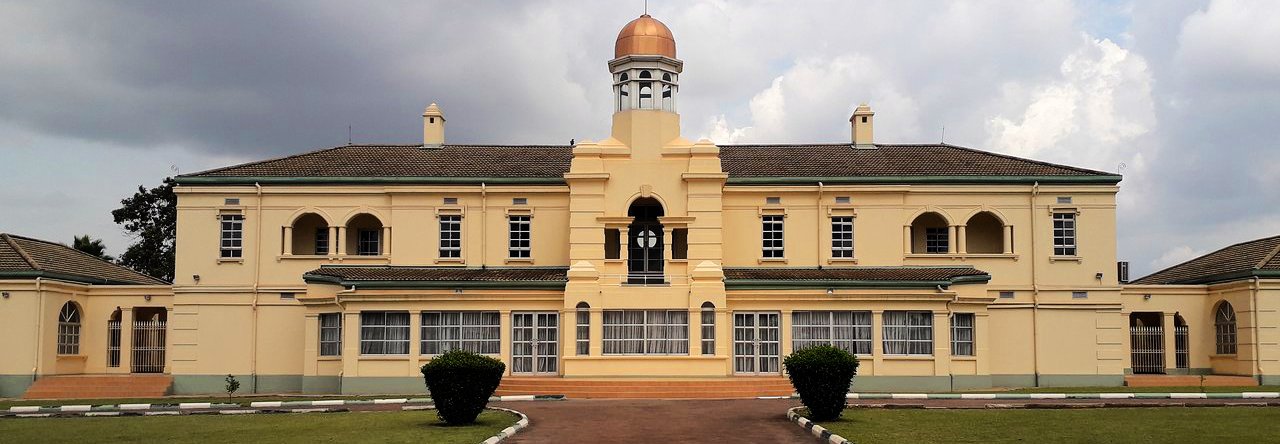Obwakabaka bwa Buganda, bwebusinga obunene mu byafaayo by’eggwanga Uganda eyawamu.
Busangibwa ku lubalama lw’ennyanga Nalubaale (Lake Victoria). Bwatandikibwawo mu kyasa ekya 14 (14th Century), nga bukulemberwa Kabaka Kintu eyakulemberamu ebika bya Buganda ebyasooka okuva mu bukiika kkono bwa Africa , ng’obalaamiiriza odda mu buvanjuba (NorthEast Africa).

Kabaka Kintu yeyatandikawo Buganda oluvannyuma lw’okuwangula Bemba Musota gweyasangawo n’abantu be beyali akulembera.
Kabaka Kintu yalagira abaganda beyajja nabo mu bika ebyenjawulo, nti bawase n’okufumbirwa abantu bannansangwa abaaliwo, abaali bakulemberwa Bemba Musota, era muno mwemwava Obwakabaka bwe obuliwo n’okutuuka kaakano.
Nga wayise ekiseera Kabaka Kintu yabula bubuzi, era nga n’okutuuka kati tamanyiddwawko mayitire. Okuva olwo Obwakabaka bwa Buganda buzze bufuna ba Kabaka abenjawulo abawerera ddala 36.
Mu byasa ebyasooka abataka abakulu ab’ebika bebaasalirangawo ba Kabaka ku buli nsonga, wabula ekiseera bwekyagenda kitambula okutuuka nga mu mwaka gwa 1700, ba Kabaka abaddako bayongera okufuna obuyinza n’amaanyi agenjawulo okukulembera Obwakabaka.
Mu kyasa ekye 16, Buganda yeyongera okufuna amaanyi mu by’okwerinda n’ebyekijaasi netandika okugaziya ensalo zaayo okuva ku masaza asatu okutuuka ku masaza 12 omwaka gwa 1890 wegwatuukira, mu nteekateeka eyatwala emyaka 300.
Buganda yeyongera okugaziwa era nefuuka obwakabaka obw’amaanyi oluvannyuma lw’abwakabaka bw’abachwezi (chwezi empire) okusaanawo era kigambibwa nti Buganda nayo yasibuka mu bw’akabaka bw’abachwezi.
Obwakabaka bwa Buganda busangibwa mu bukiika kkono bw’ennyanja Nnalubaale ng’obalaamiriza odda e Bugwanjuba (Northwest of L. Victoria), ng’esalagana ne Bunyoro ku ludda olw’obujanvuba (East).
Abantu bannansangwa abaasokawo mu Buganda nga Kabaka Kintu tanajja baayitibwa Bantu, abagambibwa okuba nti ensibuko yabwe yali ye Congo, abaasiyagguka nebasenga mu bitundu omuli kati amasaza Busiro, Kyadondo ne Mawokota.
Olwa Buganda yaffe
Ekitiibwa kya Buganda kyava dda
Naffe tukikuumenga.
Okuva edda n’edda eryo lyonna
Lino eggwanga Buganda
Nti lyamanyibwa nnyo eggwanga lyaffe
Okwetoloola ensi yonna
Abazira ennyo abaatusooka
Baalwana nnyo mu ntalo
Ne balyagala nnyo eggwanga lyaffe
Naffe tulyagalenga
Ffe abaana ba leero ka tulwane
Okukuza Buganda
Nga tujjukira nnyo bajjajja baffe
Baafirira ensi yaffe
Nze naayimba ntya ne sitenda
Ssaabasajja Kabaka
Asaanira afuge Obuganda bwonna
Naffe nga tumwesiga
Katonda omulungi ow’ekisa
Otubeere Mukama
Otubundugguleko emikisa gyo era
Bbaffe omukuumenga

















